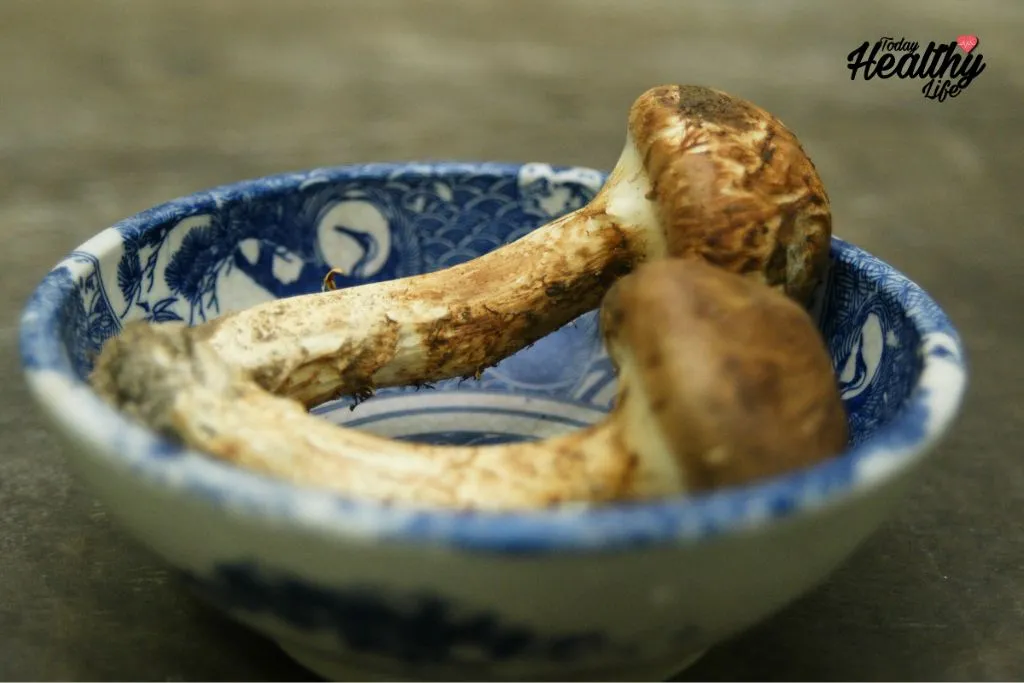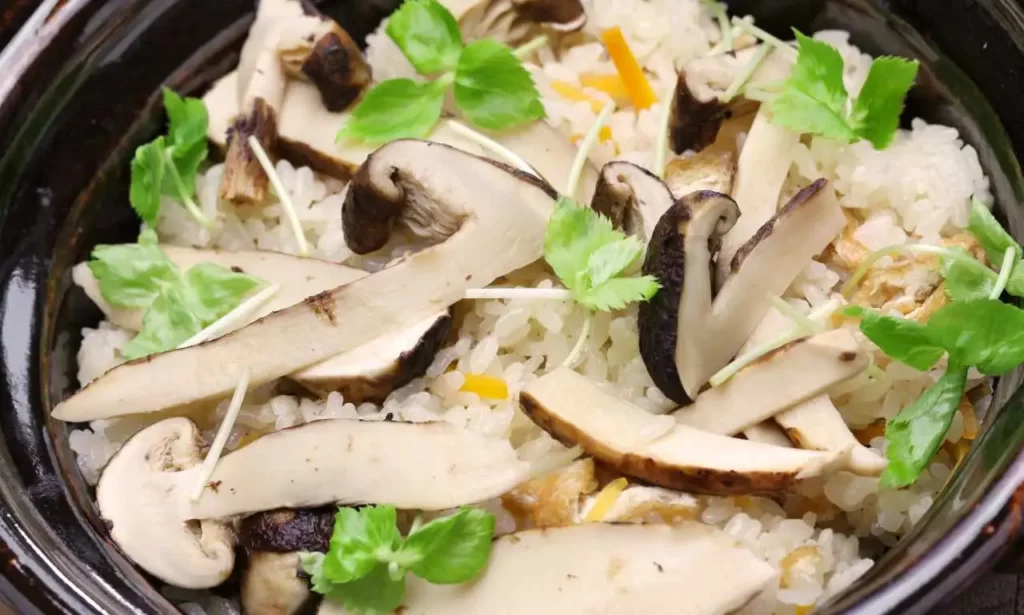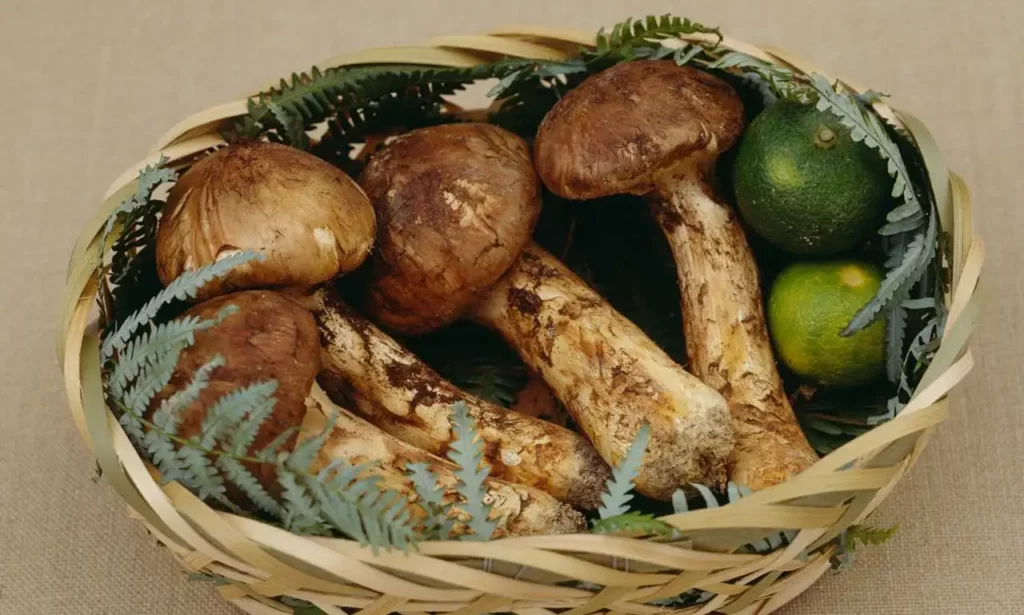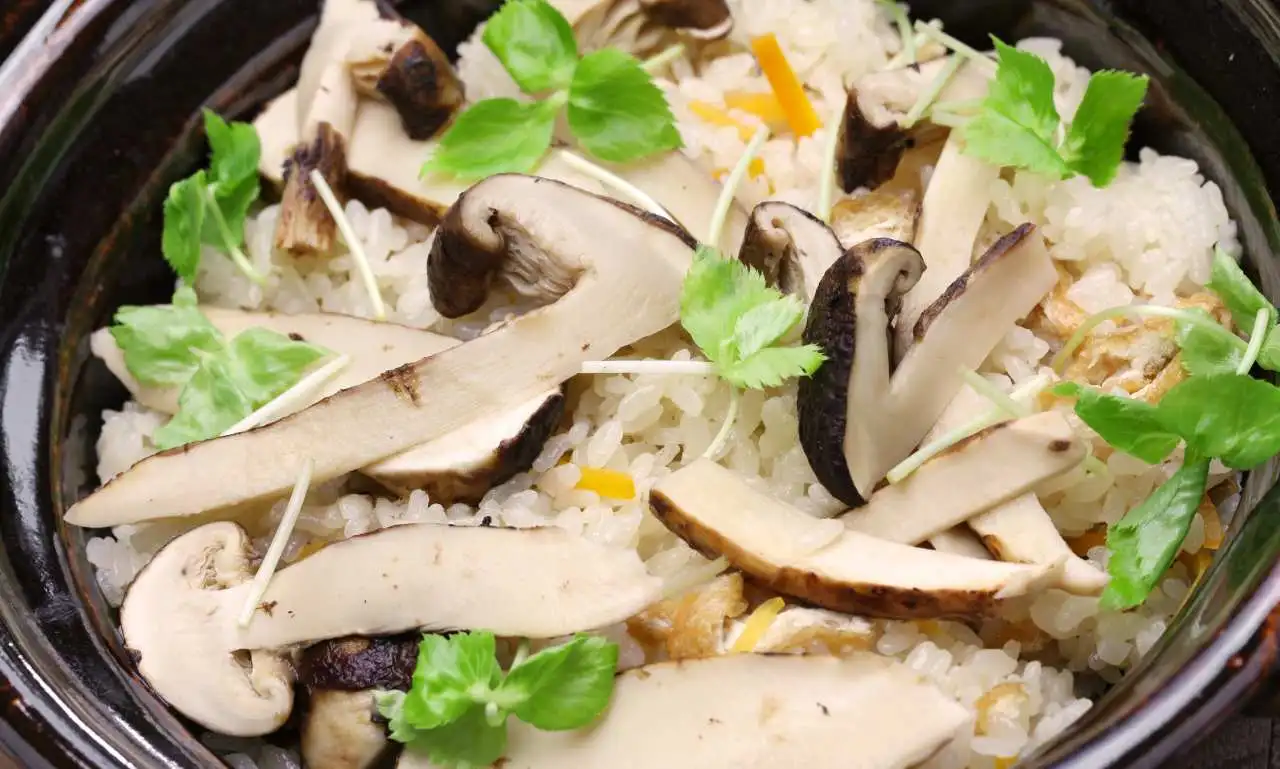When it comes to the world of gastronomy, few ingredients can capture the imagination quite like mushrooms.
These fascinating fungi come in various shapes, sizes, and flavors, offering a diverse array of culinary possibilities.
Among the plethora of mushrooms, the matsutake stands out as a prized delicacy with a rich history and a distinctive aroma that has captured the hearts of chefs and food enthusiasts alike.
In this article, we’ll delve into the captivating world of matsutake mushrooms, exploring their origins, unique characteristics, and a selection of tantalizing recipes that showcase their exceptional flavor profile.

Table of Contents
Unveiling the Matsutake Mushroom
The matsutake mushroom, scientifically known as Tricholoma matsutake, is a treasured ingredient in Japanese and other Asian cuisines.
Renowned for its potent aroma and exquisite taste, the matsutake is often referred to as the “pine mushroom” due to its symbiotic relationship with pine trees.
These mushrooms flourish in the nutrient-rich soil under certain pine species, particularly in regions with cool, temperate climates such as Japan, Korea, China, and parts of North America.
Matsutake mushrooms are highly prized for their flavor and aroma. They are considered to be one of the most expensive mushrooms in the world, and can fetch prices of up to $1,000 per pound.
Origins and Cultural Significance
The matsutake mushroom holds deep cultural and culinary significance in Japan. For centuries, it has been celebrated in traditional Japanese art, literature, and cuisine.
The act of foraging for matsutake, known as matsutake-gari, is not merely a culinary pursuit; it is a revered cultural practice that brings people closer to nature and connects them with the changing seasons.
In Japan, the matsutake season is highly anticipated, and the first matsutake of the year, known as shin-matsutake, fetches premium prices at markets and auctions.
This cultural reverence for matsutake has extended beyond Japan’s borders, as the mushroom has gained popularity in gourmet circles around the world.
Distinctive Aroma and Flavor
One of the most remarkable features of the matsutake mushroom is its potent aroma. Described as a unique blend of earthiness, pine, and spice, the fragrance of matsutake is unmistakable.
This aroma is often compared to the essence of the forest floor, capturing the essence of its natural habitat.
When it comes to flavor, matsutake mushrooms offer a delicate balance of umami, sweetness, and nuttiness, making them a sought-after ingredient for various culinary creations.
Matsutake Mushroom Recipes

The culinary versatility of matsutake mushrooms is truly astonishing. From simple dishes that highlight their natural flavor to complex creations that incorporate a multitude of textures and tastes, matsutake mushrooms can elevate any meal.
Here, we’ll explore three exquisite recipes that showcase the matsutake’s potential in the kitchen.
1. Matsutake Dobin Mushi
Dobin mushi is a traditional Japanese clear soup that’s as visually appealing as it is flavorful.
This delicate broth allows the essence of the matsutake mushroom to shine through. Here’s how to prepare this timeless recipe:
Ingredients:
- 2 fresh matsutake mushrooms
- 4 cups of dashi (Japanese broth)
- 1 small chicken breast, thinly sliced
- 1 tablespoon of sake
- 1 tablespoon of soy sauce
- Salt, to taste
- Mitsuba leaves (Japanese wild parsley) for garnish
Instructions:
- Clean the matsutake mushrooms gently using a damp cloth, removing any dirt. Slice them into thin pieces.
- In a small pot, bring the dashi to a gentle simmer.
- Add the matsutake slices, chicken breast, sake, and soy sauce to the pot.
- Let the ingredients simmer for about 5 minutes, or until the chicken is cooked through.
- Season with salt to taste.
- Serve the soup in individual dobin (Japanese teapot) or bowls, garnished with mitsuba leaves.
2. Matsutake Gohan (Matsutake Rice)
Matsutake gohan is a fragrant and flavorful rice dish that encapsulates the essence of matsutake mushrooms. It’s a staple during the matsutake season in Japan.
Ingredients:
- 2 cups of Japanese short-grain rice
- 2 fresh matsutake mushrooms
- 1/4 cup of sake
- 1/4 cup of soy sauce
- 1/4 teaspoon of salt
- Water for rinsing the rice
Instructions:
- Wash the rice thoroughly until the water runs clear. Let it drain in a sieve for about 30 minutes.
- Clean the matsutake mushrooms and cut them into thin slices.
- In a rice cooker, combine the washed rice, sliced matsutake mushrooms, sake, and soy sauce.
- Add water according to your rice cooker’s instructions for 2 cups of rice.
- Start the rice cooker and let it work its magic.
- Once the rice is cooked, let it steam for an additional 10 minutes to fully absorb the flavors.
- Gently fluff the rice with a rice paddle, incorporating the matsutake slices evenly.
- Serve the matsutake gohan as a side dish to complement a variety of main courses.
3. Matsutake Tempura
Tempura is a beloved Japanese dish that involves lightly battering and frying ingredients to achieve a crispy exterior while maintaining the natural flavors within.
Matsutake tempura provides a delightful contrast between the crunchy coating and the tender mushroom.
Ingredients:
- 2 fresh matsutake mushrooms
- Tempura batter mix (readily available in stores)
- Ice-cold water
- Vegetable oil, for frying
- Tempura dipping sauce (tempura tsuyu)
Instructions:
- Clean the matsutake mushrooms and slice them into manageable pieces.
- Prepare the tempura batter mix according to the package instructions, using ice-cold water to ensure a light and crispy texture.
- Heat vegetable oil in a deep frying pan or pot to around 350°F (175°C).
- Dip the matsutake slices into the tempura batter, coating them evenly.
- Carefully place the battered mushrooms in the hot oil and fry until they turn golden brown and crispy. This should take about 2-3 minutes.
- Use a slotted spoon to transfer the tempura to a plate lined with paper towels to remove excess oil.
- Serve the matsutake tempura hot with tempura dipping sauce on the side.
The Matsutake Experience: Beyond the Palate

Delving into the world of matsutake mushrooms goes beyond just their culinary applications. Their captivating aroma, cultural significance, and connection to nature make them an ingredient that resonates on a deeper level.
Whether you’re a seasoned chef or an amateur cook, experimenting with matsutake mushrooms can be a rewarding and enriching experience.
Foraging for matsutake mushrooms can be an adventure in itself, as it involves trekking through pine forests and exploring the beauty of nature.
However, it’s essential to exercise caution and follow local regulations when foraging, as over-harvesting can have ecological consequences.
Beyond their gastronomic appeal, matsutake mushrooms have also inspired artists, writers, and poets throughout history.
Their unique aroma and appearance have been depicted in various forms of artistic expression, capturing the imagination of creators worldwide.
Related FAQs:
What is a matsutake mushroom, and what makes it special?
Matsutake mushrooms, scientifically known as Tricholoma matsutake, are a prized delicacy in Asian cuisines, especially in Japan.
These mushrooms have a symbiotic relationship with pine trees and grow in nutrient-rich soil in cool, temperate climates.
What makes them special is their potent aroma, often described as a combination of earthiness, pine, and spice, and their delicate balance of umami, sweetness, and nuttiness in flavor.
Where can I find matsutake mushrooms?
Matsutake mushrooms are commonly found in Japan, Korea, China, and parts of North America. They thrive in pine forests and are typically in season during the fall.
You might find them in specialized markets, gourmet stores, or even consider foraging for them if you’re in an area where they grow naturally.
How do I clean matsutake mushrooms?
To clean matsutake mushrooms, gently wipe them with a damp cloth to remove any dirt or debris. Avoid washing them under running water, as they can absorb excess moisture and lose some of their aroma and flavor.
Can I substitute matsutake mushrooms with other types of mushrooms?
While matsutake mushrooms have a unique flavor and aroma, you can certainly experiment with other mushrooms if you can’t find matsutake.
However, keep in mind that the distinctiveness of matsutake might be difficult to replicate with other varieties.
What are some traditional matsutake mushroom recipes?
Traditional matsutake mushroom recipes include dishes like matsutake gohan (matsutake rice), matsutake dobin mushi (clear soup), and matsutake tempura.
These recipes highlight the delicate flavor of matsutake while incorporating various cooking techniques.
Can I use dried matsutake mushrooms?
Yes, you can use dried matsutake mushrooms, but they will have a more concentrated flavor. To use dried matsutake, rehydrate them in warm water before cooking.
Keep in mind that the texture and aroma of dried matsutake may differ from fresh ones.
Are there any safety precautions when foraging for matsutake mushrooms?
If you’re considering foraging for matsutake mushrooms, it’s essential to be knowledgeable about the local varieties and their look-alikes.
Some wild mushrooms can be toxic, so it’s crucial to accurately identify matsutake before consumption. Consider going foraging with experienced foragers or attending workshops to learn the ropes.
How should I store matsutake mushrooms?
Matsutake mushrooms are best enjoyed fresh due to their potent aroma and flavor.
If you must store them, wrap them in a paper towel, place them in a paper bag, and store in the refrigerator’s vegetable crisper. However, they are best used within a few days of purchase.
Can I freeze matsutake mushrooms?
While it’s possible to freeze matsutake mushrooms, the freezing process may affect their texture and aroma. If you choose to freeze them, it’s recommended to clean, slice, and blanch them briefly before freezing.
Conclusion
The matsutake mushroom is a remarkable ingredient that embodies the synergy between nature, culture, and culinary artistry.
Its distinctive aroma, delicate flavor, and rich history make it a coveted delicacy that continues to captivate food enthusiasts across the globe.
Whether enjoyed in traditional Japanese dishes or integrated into contemporary creations, matsutake mushrooms offer a sensory experience that transcends the boundaries of taste alone.
So, the next time you encounter the aroma of pine and spice wafting through the air, consider embarking on a journey into the enchanting world of matsutake mushrooms. Your palate, and perhaps your soul, will thank you for it.

